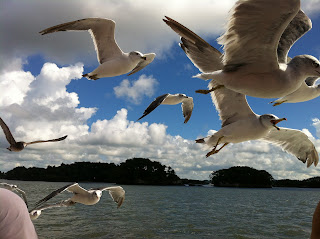 |
| Centrifugal machine to separate sake and lees |
They only produce refined Junmai-shu or the sake made purely from rice without adding brewer's alcohol.
The factory's temperature and humidity are controlled and they produce all the year round.
Their quality control is extraordinarily meticulous. They should have accumulated volumes of data.
Their very premium uses the rice milled down to 23 % of the original weight.
Centrifugal machine in addition to an ordinary pressing machine is used to separate final mash to sake and lees, which is a rare practice and the machine is more than twice more expensive than the typical accordion-like press. This way sake does not contain any possible smell from cloth bags which is used for ordinary sake pressing machines.
Pasteurization is done only once after bottling, not twice.
Their dassai brand is exported and can be enjoyed somewhere in NY and LA as well as in Taiwan and maybe some other places.
These are some of the facts I discovered through the factory tour. It was worth going, taking 1.5 hours by car from my place.
They have a web site in Japanese, English and French. Here's their site.
I bought two bottles; one is the most expensive Junmai Dai-ginjo, and the other is a sparking cloudy type sake.
They will be served at the home party coming in two days.
 |
| Most common pressing machine to produce sake from final mash |

















